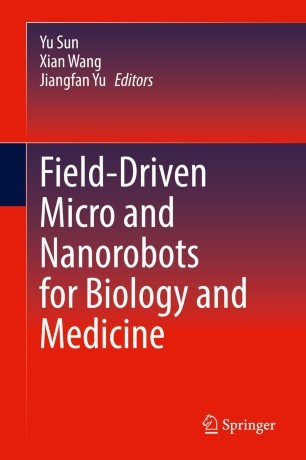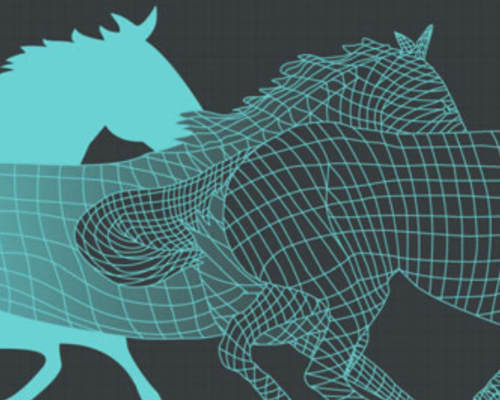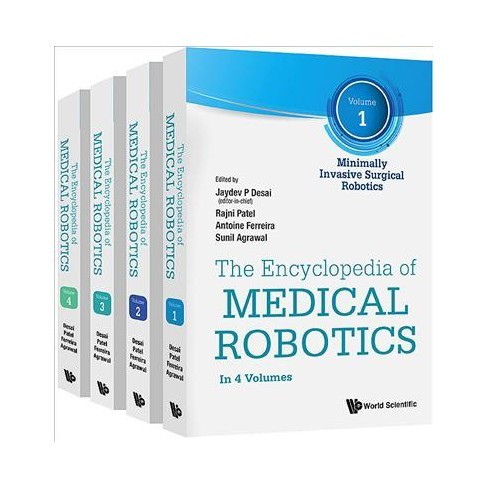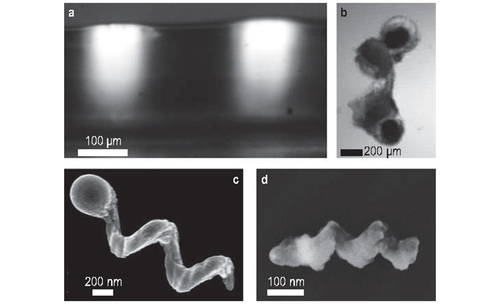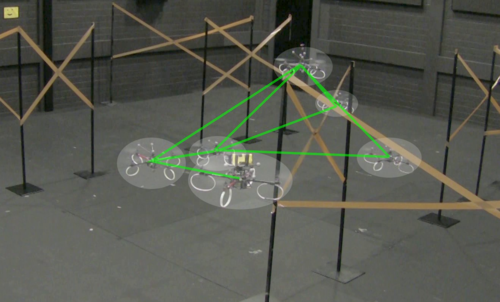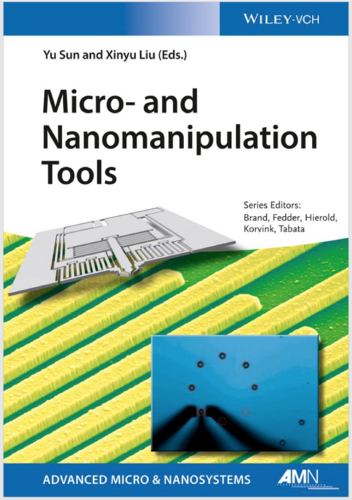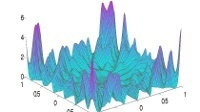2023
ei
Jin, Z., Mihalcea, R.
Natural Language Processing for Policymaking
In Handbook of Computational Social Science for Policy, pages: 141-162, 7, (Editors: Bertoni, E. and Fontana, M. and Gabrielli, L. and Signorelli, S. and Vespe, M.), Springer International Publishing, 2023 (inbook)
2022
re
Lieder, F., Prentice, M.
Life Improvement Science
In Encyclopedia of Quality of Life and Well-Being Research, Springer, November 2022 (inbook)
ei
Peters, J., Bauer, S., Pfister, N.
Causal Models for Dynamical Systems
In Probabilistic and Causal Inference: The Works of Judea Pearl, pages: 671-690, 1, Association for Computing Machinery, 2022 (inbook)
ei
plg
Karimi, A. H., von Kügelgen, J., Schölkopf, B., Valera, I.
Towards Causal Algorithmic Recourse
In xxAI - Beyond Explainable AI: International Workshop, Held in Conjunction with ICML 2020, July 18, 2020, Vienna, Austria, Revised and Extended Papers, pages: 139-166, (Editors: Holzinger, Andreas and Goebel, Randy and Fong, Ruth and Moon, Taesup and Müller, Klaus-Robert and Samek, Wojciech), Springer International Publishing, 2022 (inbook)
ei
Schölkopf, B.
Causality for Machine Learning
In Probabilistic and Causal Inference: The Works of Judea Pearl, pages: 765-804, 1, Association for Computing Machinery, New York, NY, USA, 2022 (inbook)
ei
Salewski, L., Koepke, A. S., Lensch, H. P. A., Akata, Z.
CLEVR-X: A Visual Reasoning Dataset for Natural Language Explanations
In xxAI - Beyond Explainable AI: International Workshop, Held in Conjunction with ICML 2020, July 18, 2020, Vienna, Austria, Revised and Extended Papers, pages: 69-88, (Editors: Holzinger, Andreas and Goebel, Randy and Fong, Ruth and Moon, Taesup and Müller, Klaus-Robert and Samek, Wojciech), Springer International Publishing, 2022 (inbook)
2021
pf
Qiu, T., Jeong, M., Goyal, R., Kadiri, V., Sachs, J., Fischer, P.
Magnetic Micro-/Nanopropellers for Biomedicine
In Field-Driven Micro and Nanorobots for Biology and Medicine, pages: 389-410, 16, (Editors: Sun, Y. and Wang, X. and Yu, J.), Springer Nature, November 2021 (inbook)
rm
Purnendu, , Novack, S., Acome, E., Alistar, M., Keplinger, C., Gross, M. D., Bruns, C., Leithinger, D.
Electriflow: Augmenting Books With Tangible Animation Using Soft Electrohydraulic Actuators
In ACM SIGGRAPH 2021 Labs, pages: 1-2, Association for Computing Machinery, SIGGRAPH 2021, August 2021 (inbook)
2020
ev
Usenko, V., Stumberg, L. V., Stückler, J., Cremers, D.
TUM Flyers: Vision-Based MAV Navigation for Systematic Inspection of Structures
In Bringing Innovative Robotic Technologies from Research Labs to Industrial End-users: The Experience of the European Robotics Challenges, 136, pages: 189-209, Springer International Publishing, 2020 (inbook)
icm
Popescu, M. N., Uspal, W. E.
Adopting the Boundary Homogenization Approximation from Chemical Kinetics to Motile Chemically Active Particles
In Chemical Kinetics, pages: 517-540, (Editors: Lindenberg, Katja and Metzler, Ralf and Oshanin, Gleb), World Scientific, New Jersey, NJ, 2020 (incollection)
pf
Palagi, S.
Soft Microrobots Based on Photoresponsive Materials
In Mechanically Responsive Materials for Soft Robotics, pages: 327-362, (Editors: Koshima, Hideko), Wiley-VCH, Weinheim, 2020 (incollection)
2019
mms
Schütz, G.
Nanomagnetismus im Röntgenlicht
In Vielfältige Physik, pages: 173-182, Springer Spektrum, Berlin, Heidelberg, 2019 (incollection)
dlg
Badri-Spröwitz, A.
Das Tier als Modell für Roboter, und Roboter als Modell für Tiere
In pages: 167-175, Springer, 2019 (incollection)
2018
pf
Palagi, S., Walker, D. Q. T., Fischer, P.
Nanoscale robotic agents in biological fluids and tissues
In The Encyclopedia of Medical Robotics, 2, pages: 19-42, 2, (Editors: Desai, J. P. and Ferreira, A.), World Scientific, October 2018 (inbook)
hi
Kuchenbecker, K. J.
Haptics and Haptic Interfaces
In Encyclopedia of Robotics, (Editors: Marcelo H. Ang and Oussama Khatib and Bruno Siciliano), Springer, May 2018 (incollection)
ei
Schölkopf, B.
Maschinelles Lernen: Entwicklung ohne Grenzen?
In Mit Optimismus in die Zukunft schauen. Künstliche Intelligenz - Chancen und Rahmenbedingungen, pages: 26-34, (Editors: Bender, G. and Herbrich, R. and Siebenhaar, K.), B&S Siebenhaar Verlag, 2018 (incollection)
ei
Wichmann, F. A., Jäkel, F.
Methods in Psychophysics
In Stevens’ Handbook of Experimental Psychology and Cognitive Neuroscience, 5 (Methodology), 7, 4th, John Wiley & Sons, Inc., 2018 (inbook)
ei
Jayaram, V., Fiebig, K., Peters, J., Grosse-Wentrup, M.
Transfer Learning for BCIs
In Brain–Computer Interfaces Handbook, pages: 425-442, 22, (Editors: Chang S. Nam, Anton Nijholt and Fabien Lotte), CRC Press, 2018 (incollection)
2017
pf
Palagi, S., (Walker) Schamel, D., Qiu, T., Fischer, P.
Chapter 8 - Micro- and nanorobots in Newtonian and biological viscoelastic fluids
In Microbiorobotics, pages: 133 - 162, 8, Micro and Nano Technologies, Second edition, Elsevier, Boston, March 2017 (incollection)
am
ei
Peters, J., Lee, D., Kober, J., Nguyen-Tuong, D., Bagnell, J., Schaal, S.
Robot Learning
In Springer Handbook of Robotics, pages: 357-394, 15, 2nd, (Editors: Siciliano, Bruno and Khatib, Oussama), Springer International Publishing, 2017 (inbook)
ei
Peters, J., Bagnell, J.
Policy Gradient Methods
In Encyclopedia of Machine Learning and Data Mining, pages: 982-985, 2nd, (Editors: Sammut, Claude and Webb, Geoffrey I.), Springer US, 2017 (inbook)
ei
Flad, N., Fomina, T., Bülthoff, H. H., Chuang, L. L.
Unsupervised clustering of EOG as a viable substitute for optical eye-tracking
In First Workshop on Eye Tracking and Visualization (ETVIS 2015), pages: 151-167, Mathematics and Visualization, (Editors: Burch, M., Chuang, L., Fisher, B., Schmidt, A., and Weiskopf, D.), Springer, 2017 (inbook)
ei
Peters, J., Tedrake, R., Roy, N., Morimoto, J.
Robot Learning
In Encyclopedia of Machine Learning and Data Mining, pages: 1106-1109, 2nd, (Editors: Sammut, Claude and Webb, Geoffrey I.), Springer US, 2017 (inbook)
ei
Janzing, D.
Statistical Asymmetries Between Cause and Effect
In Time in Physics, pages: 129-139, Tutorials, Schools, and Workshops in the Mathematical Sciences, (Editors: Renner, Renato and Stupar, Sandra), Springer International Publishing, Cham, 2017 (inbook)
ps
Nestmeyer, T., Robuffo Giordano, P., Bülthoff, H. H., Franchi, A.
Decentralized Simultaneous Multi-target Exploration using a Connected Network of Multiple Robots
In pages: 989-1011, Autonomous Robots, 2017 (incollection)
mg
Righetti, L., Herzog, A.
Momentum-Centered Control of Contact Interactions
In Geometric and Numerical Foundations of Movements, 117, pages: 339-359, Springer Tracts in Advanced Robotics, Springer, Cham, 2017 (incollection)
2016
am
Dominey, P. F., Prescott, T. J., Bohg, J., Engel, A. K., Gallagher, S., Heed, T., Hoffmann, M., Knoblich, G., Prinz, W., Schwartz, A.
Implications of Action-Oriented Paradigm Shifts in Cognitive Science
In The Pragmatic Turn - Toward Action-Oriented Views in Cognitive Science, 18, pages: 333-356, 20, Strüngmann Forum Reports, vol. 18, J. Lupp, series editor, (Editors: Andreas K. Engel and Karl J. Friston and Danica Kragic), The MIT Press, 18th Ernst Strüngmann Forum, May 2016 (incollection) In press
am
Bohg, J., Kragic, D.
Learning Action-Perception Cycles in Robotics: A Question of Representations and Embodiment
In The Pragmatic Turn - Toward Action-Oriented Views in Cognitive Science, 18, pages: 309-320, 18, Strüngmann Forum Reports, vol. 18, J. Lupp, series editor, (Editors: Andreas K. Engel and Karl J. Friston and Danica Kragic), The MIT Press, 18th Ernst Strüngmann Forum, May 2016 (incollection) In press
ei
Zhang, K., Hyvärinen, A.
Nonlinear functional causal models for distinguishing cause from effect
In Statistics and Causality: Methods for Applied Empirical Research, pages: 185-201, 8, 1st, (Editors: Wolfgang Wiedermann and Alexander von Eye), John Wiley & Sons, Inc., 2016 (inbook)
ei
Hohmann, M., Fomina, T., Jayaram, V., Widmann, N., Förster, C., Just, J., Synofzik, M., Schölkopf, B., Schöls, L., Grosse-Wentrup, M.
A cognitive brain–computer interface for patients with amyotrophic lateral sclerosis
In Brain-Computer Interfaces: Lab Experiments to Real-World Applications, 228(Supplement C):221-239, 8, Progress in Brain Research, (Editors: Damien Coyle), Elsevier, 2016 (incollection)
am
Ting, J., Meier, F., Vijayakumar, S., Schaal, S.
Locally Weighted Regression for Control
In Encyclopedia of Machine Learning and Data Mining, pages: 1-14, Springer US, Boston, MA, 2016 (inbook)
2015
pi
Diller, E., Sitti, M.
Untethered Magnetic Micromanipulation
In Micro-and Nanomanipulation Tools, 13, 10, Wiley-VCH Verlag GmbH & Co. KGaA, November 2015 (inbook)
ei
Charpiat, G., Hofmann, M., Schölkopf, B.
Kernel methods in medical imaging
In Handbook of Biomedical Imaging, pages: 63-81, 4, (Editors: Paragios, N., Duncan, J. and Ayache, N.), Springer, Berlin, Germany, June 2015 (inbook)
am
ics
Trimpe, S.
Lernende Roboter
In Jahrbuch der Max-Planck-Gesellschaft, Max Planck Society, May 2015, (popular science article in German) (inbook)
am
Schaal, S.
Autonomous Robots
In Jahrbuch der Max-Planck-Gesellschaft, May 2015 (incollection)
ei
Janzing, D., Steudel, B., Shajarisales, N., Schölkopf, B.
Justifying Information-Geometric Causal Inference
In Measures of Complexity: Festschrift for Alexey Chervonenkis, pages: 253-265, 18, (Editors: Vovk, V., Papadopoulos, H. and Gammerman, A.), Springer, 2015 (inbook)
am
Peters, J., Lee, D., Kober, J., Nguyen-Tuong, D., Bagnell, J. A., Schaal, S.
Robot Learning
In Springer Handbook of Robotics 2nd Edition, pages: 1371-1394, Springer Berlin Heidelberg, Berlin, Heidelberg, 2015 (incollection)
2014
ei
Zhang, K., Schölkopf, B., Muandet, K., Wang, Z., Zhou, Z., Persello, C.
Single-Source Domain Adaptation with Target and Conditional Shift
In Regularization, Optimization, Kernels, and Support Vector Machines, pages: 427-456, 19, Chapman & Hall/CRC Machine Learning & Pattern Recognition, (Editors: Suykens, J. A. K., Signoretto, M. and Argyriou, A.), Chapman and Hall/CRC, Boca Raton, USA, 2014 (inbook)
ei
Schultz, T., Fuster, A., Ghosh, A., Deriche, R., Florack, L., Lim, L.
Higher-Order Tensors in Diffusion Imaging
In Visualization and Processing of Tensors and Higher Order Descriptors for Multi-Valued Data, pages: 129-161, Mathematics + Visualization, (Editors: Westin, C.-F., Vilanova, A. and Burgeth, B.), Springer, 2014 (inbook)
ei
Schultz, T., Vilanova, A., Brecheisen, R., Kindlmann, G.
Fuzzy Fibers: Uncertainty in dMRI Tractography
In Scientific Visualization: Uncertainty, Multifield, Biomedical, and Scalable Visualization, pages: 79-92, 8, Mathematics + Visualization, (Editors: Hansen, C. D., Chen, M., Johnson, C. R., Kaufman, A. E. and Hagen, H.), Springer, 2014 (inbook)
ei
Sra, S.
Nonconvex Proximal Splitting with Computational Errors
In Regularization, Optimization, Kernels, and Support Vector Machines, pages: 83-102, 4, (Editors: Suykens, J. A. K., Signoretto, M. and Argyriou, A.), CRC Press, 2014 (inbook)
icm
Mattos, Thiago G., Mejia-Monasterio, Carlos, Metzler, Ralf, Oshanin, Gleb, Schehr, G.
Trajectory to trajectory fluctuations in first-passage phenomena in bounded domains
In First-passage phenomena and their applications, pages: 203-225, World Scientific Publishing, Singapore, 2014 (incollection)
pi
Diller, E., Ye, Z., Giltinan, J., Sitti, M.
Addressing of Micro-robot Teams and Non-contact Micro-manipulation
In Small-Scale Robotics. From Nano-to-Millimeter-Sized Robotic Systems and Applications, pages: 28-38, Springer Berlin Heidelberg, 2014 (incollection)
al
Martius, G., Der, R., Herrmann, J. M.
Robot Learning by Guided Self-Organization
In Guided Self-Organization: Inception, 9, pages: 223-260, Emergence, Complexity and Computation, Springer Berlin Heidelberg, 2014 (incollection)
ps
Gall, J.
Simulated Annealing
In Encyclopedia of Computer Vision, pages: 737-741, 0, (Editors: Ikeuchi, K. ), Springer Verlag, 2014, to appear (inbook)
2013
ei
Grosse-Wentrup, M., Schölkopf, B.
A Review of Performance Variations in SMR-Based Brain–Computer Interfaces (BCIs)
In Brain-Computer Interface Research, pages: 39-51, 4, SpringerBriefs in Electrical and Computer Engineering, (Editors: Guger, C., Allison, B. Z. and Edlinger, G.), Springer, 2013 (inbook)
ei
Schölkopf, B., Janzing, D., Peters, J., Sgouritsa, E., Zhang, K., Mooij, J.
Semi-supervised learning in causal and anticausal settings
In Empirical Inference, pages: 129-141, 13, Festschrift in Honor of Vladimir Vapnik, (Editors: Schölkopf, B., Luo, Z. and Vovk, V.), Springer, 2013 (inbook)
ei
Sra, S.
Tractable large-scale optimization in machine learning
In Tractability: Practical Approaches to Hard Problems, pages: 202-230, 7, (Editors: Bordeaux, L., Hamadi , Y., Kohli, P. and Mateescu, R. ), Cambridge University Press , 2013 (inbook)
ei
Seldin, Y., Schölkopf, B.
On the Relations and Differences between Popper Dimension, Exclusion Dimension and VC-Dimension
In Empirical Inference - Festschrift in Honor of Vladimir N. Vapnik, pages: 53-57, 6, (Editors: Schölkopf, B., Luo, Z. and Vovk, V.), Springer, 2013 (inbook)
icm
Rauscher, M.
Dynamics of nanodroplets on structured surfaces
In Nanodroplets, 18, pages: 143-167, Lecture Notes in Nanoscale Science and Technology, Springer, New York, 2013 (incollection)


